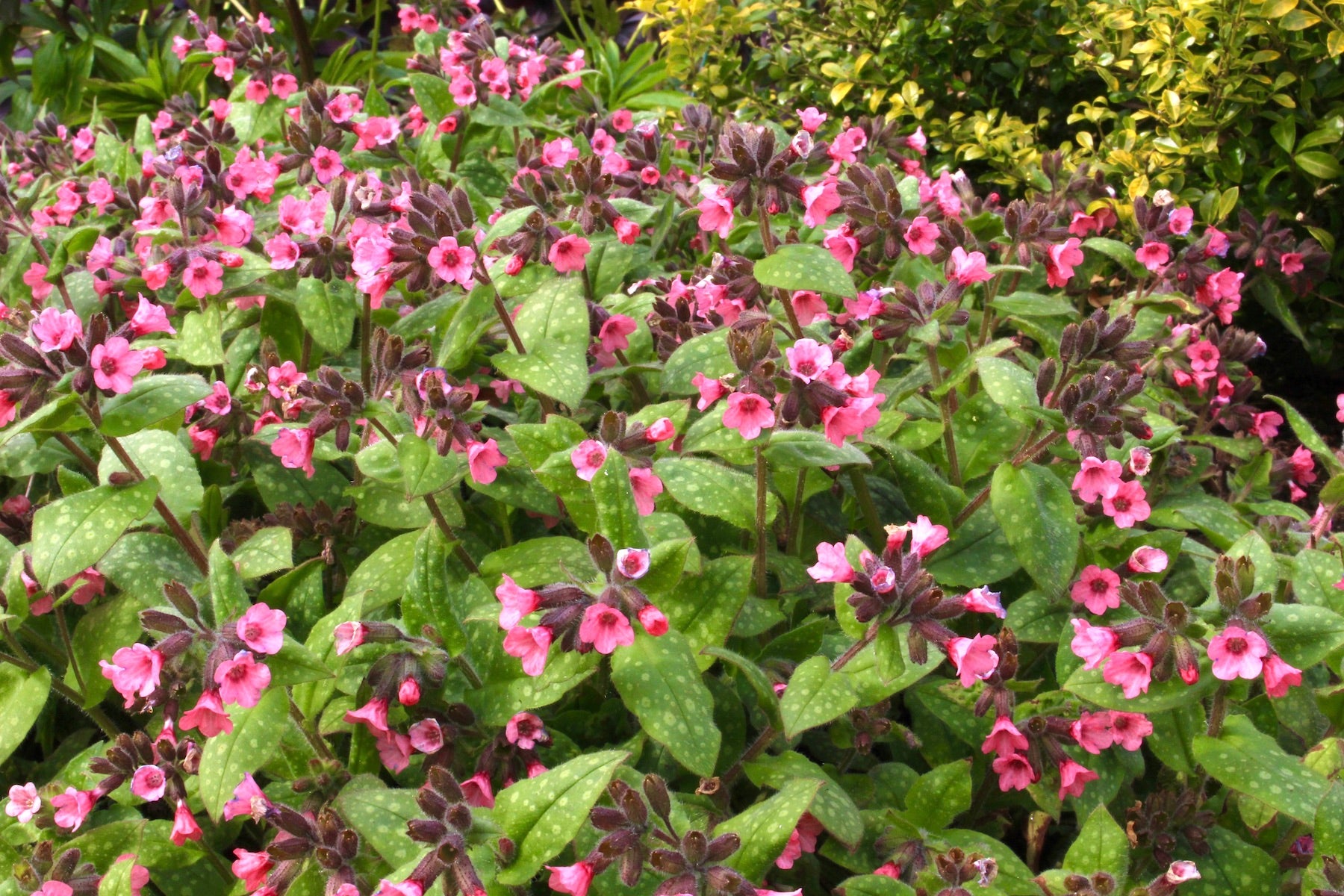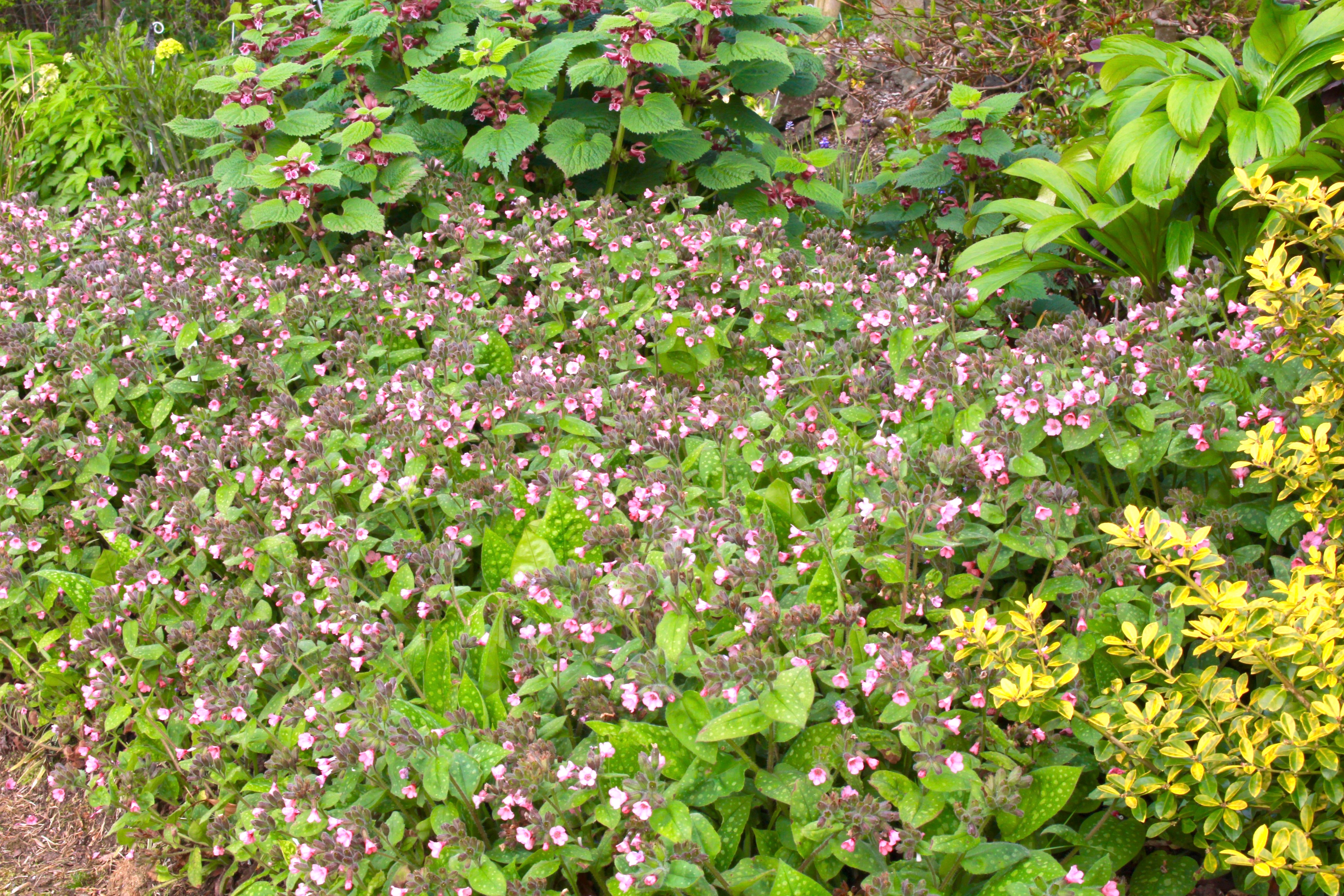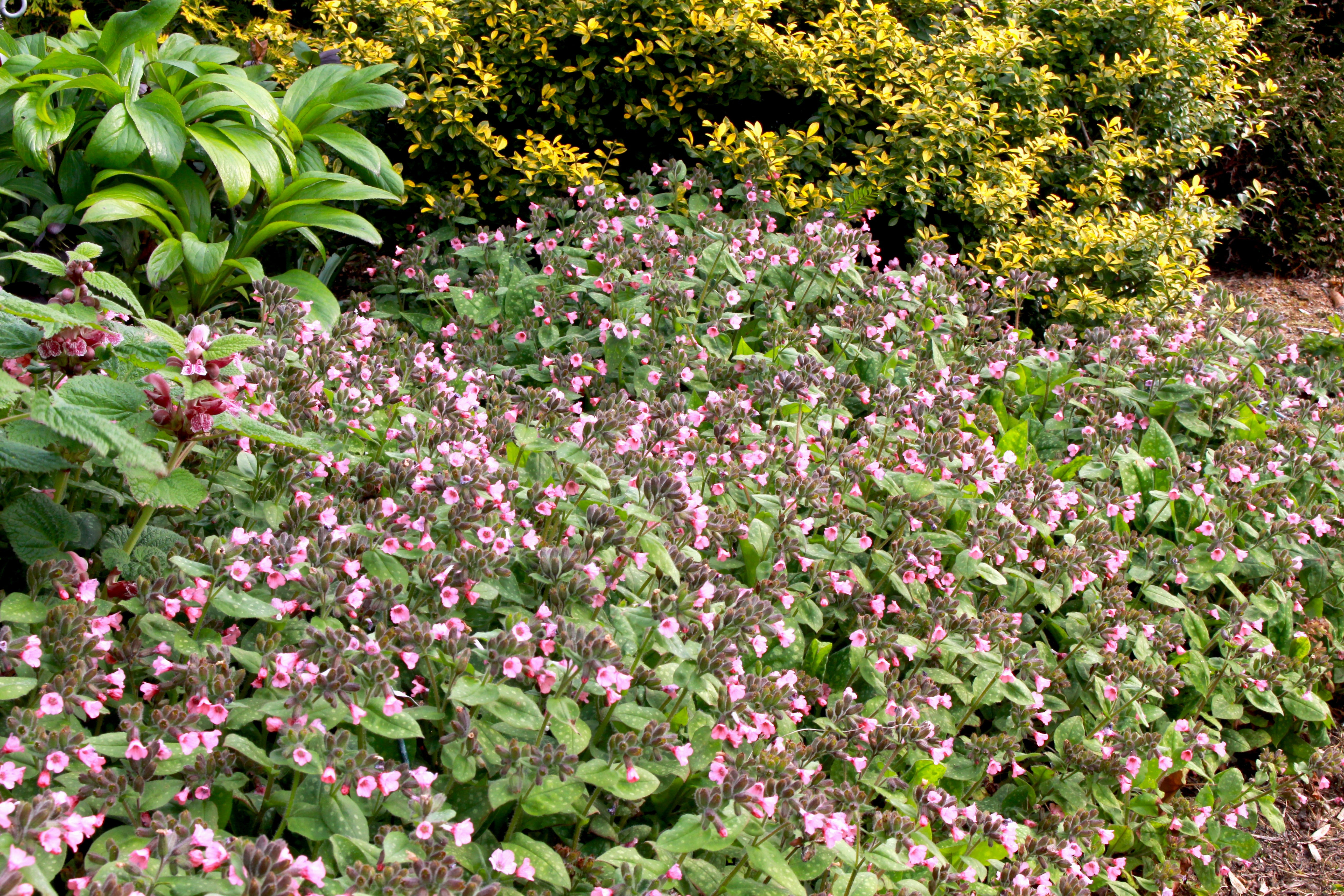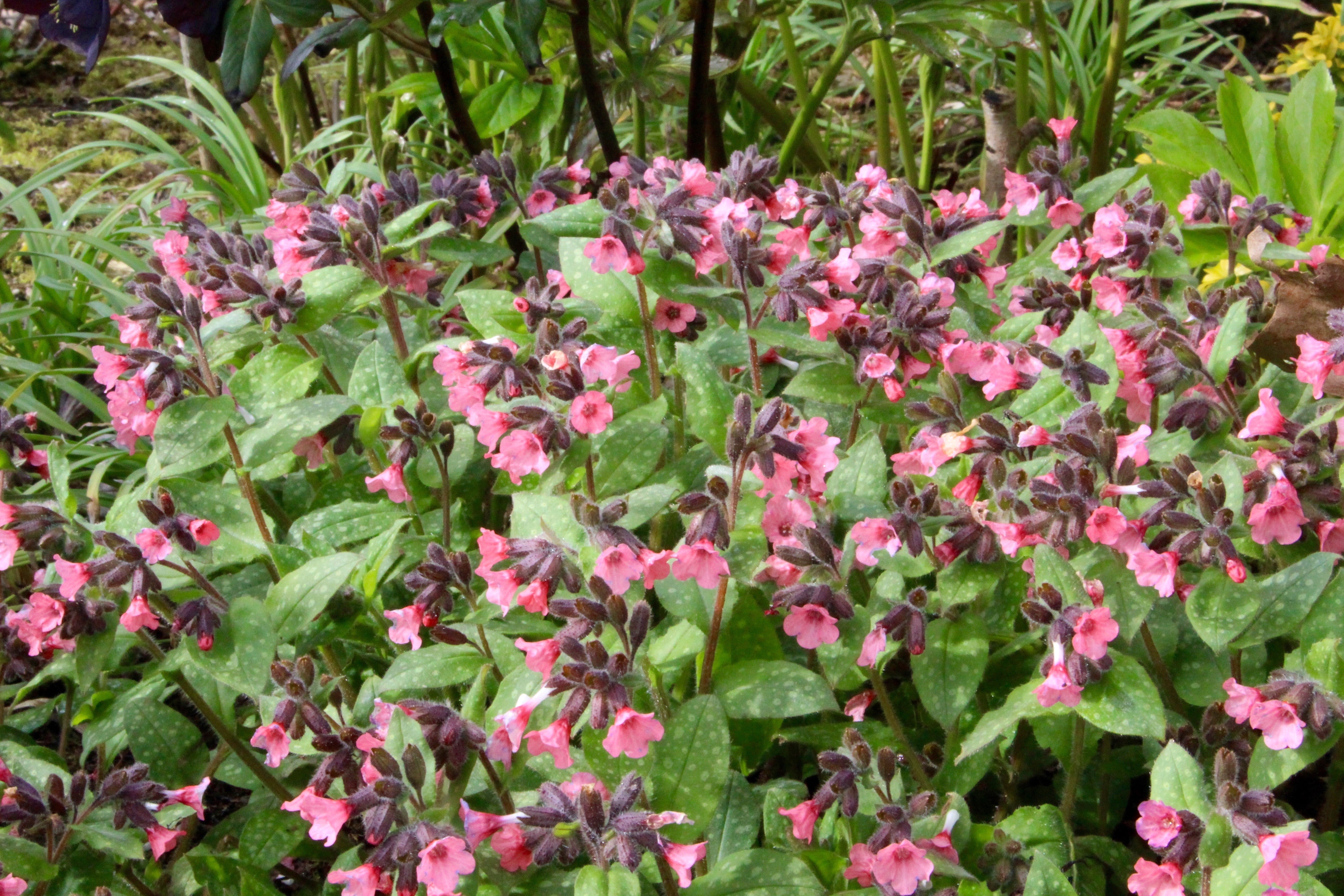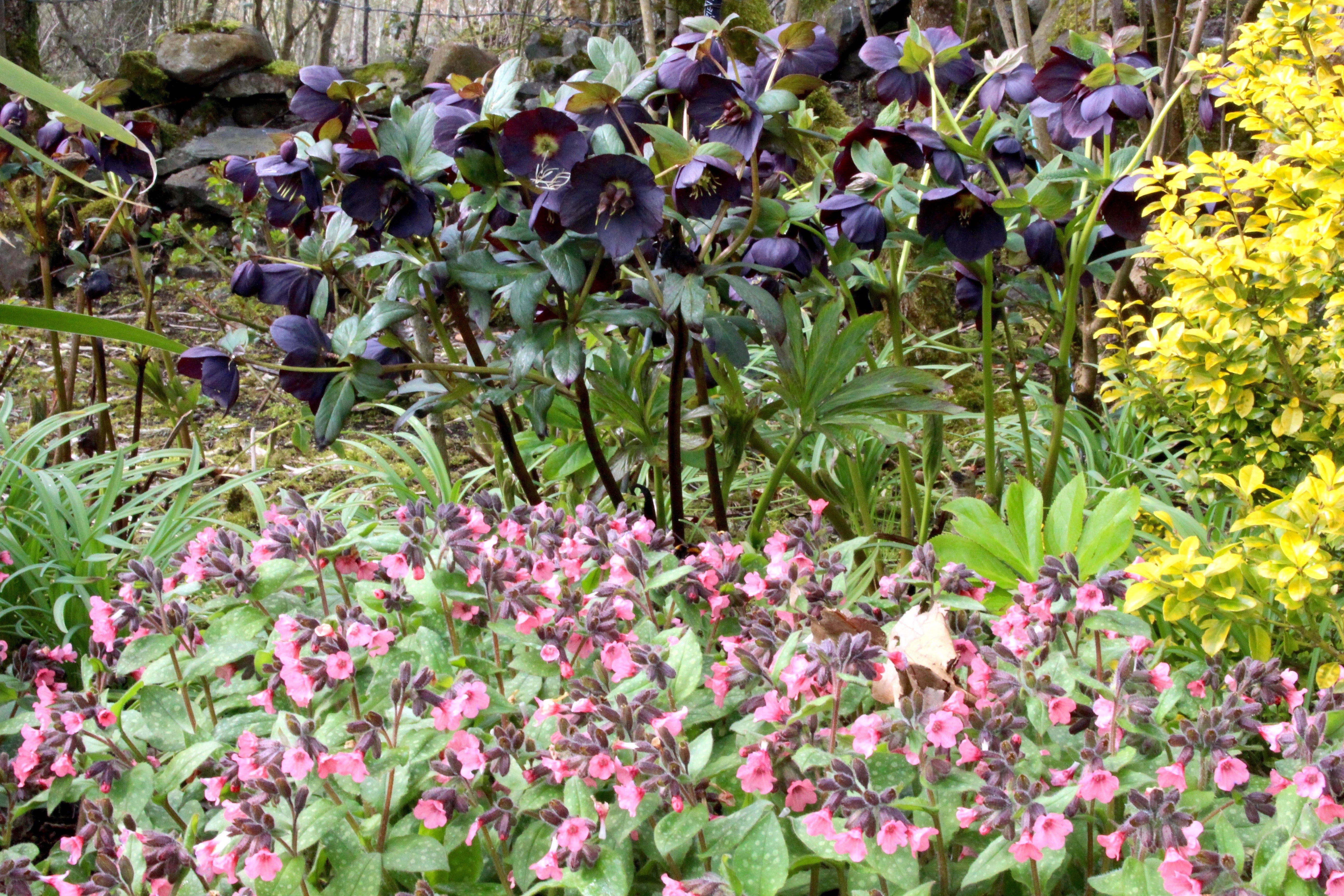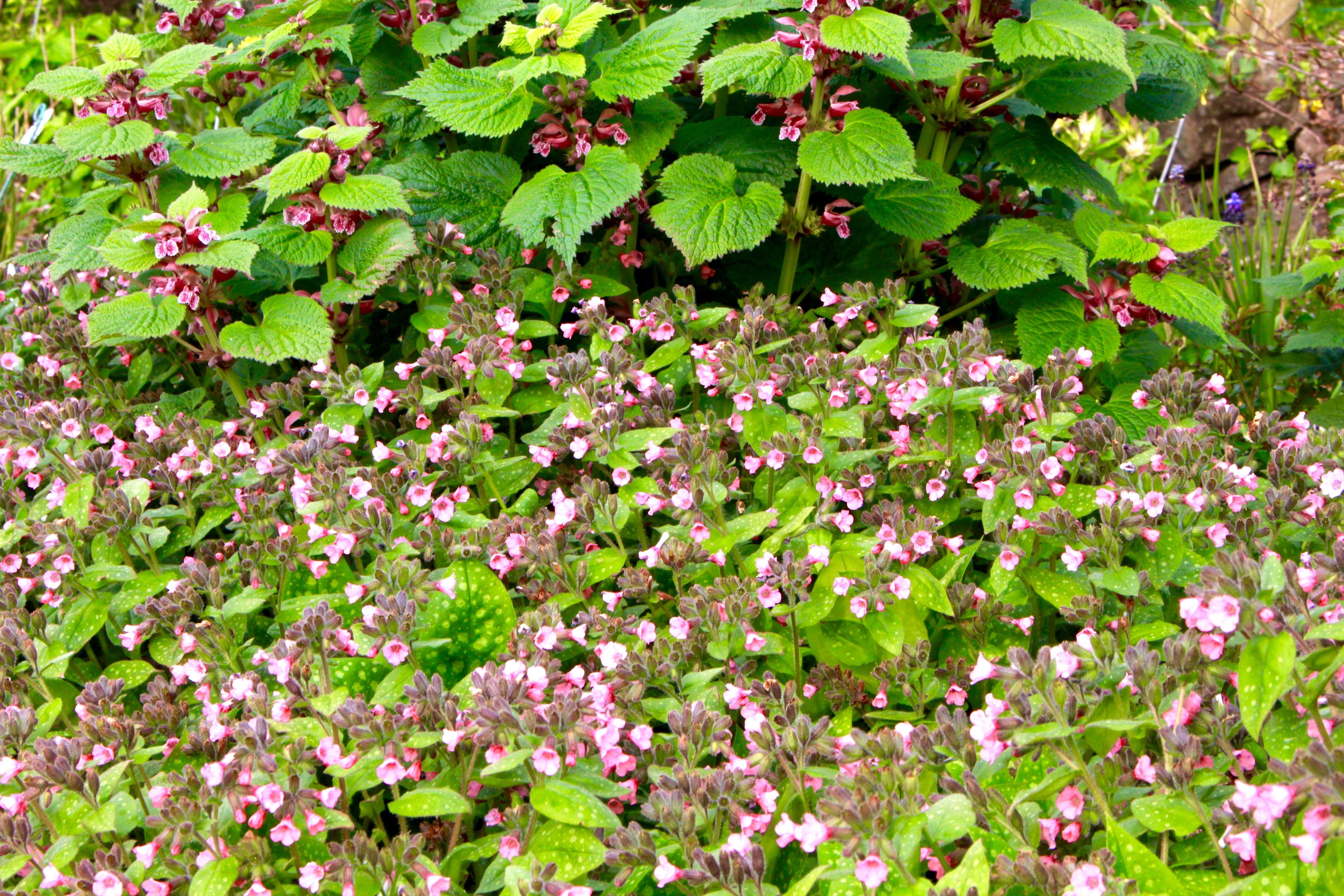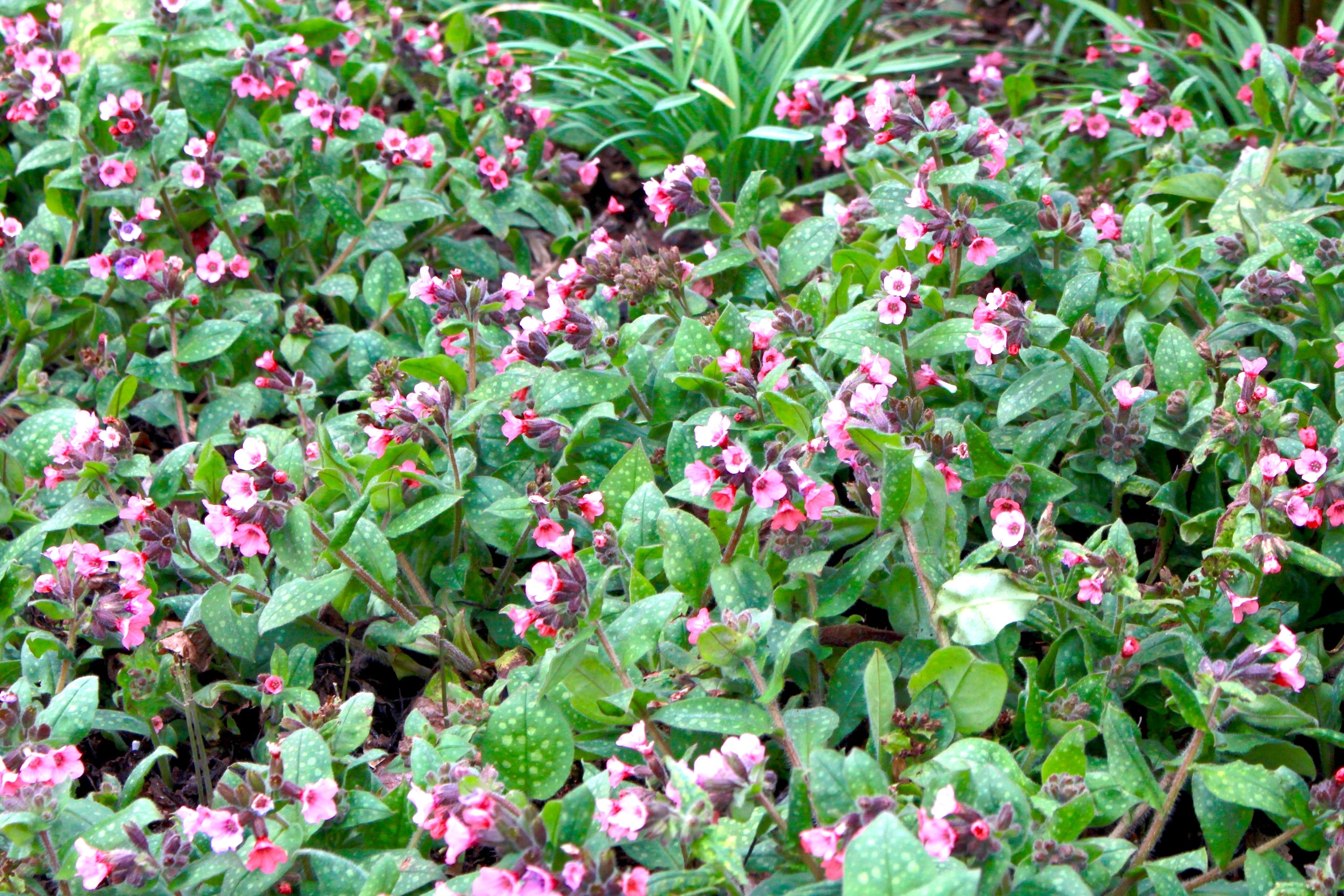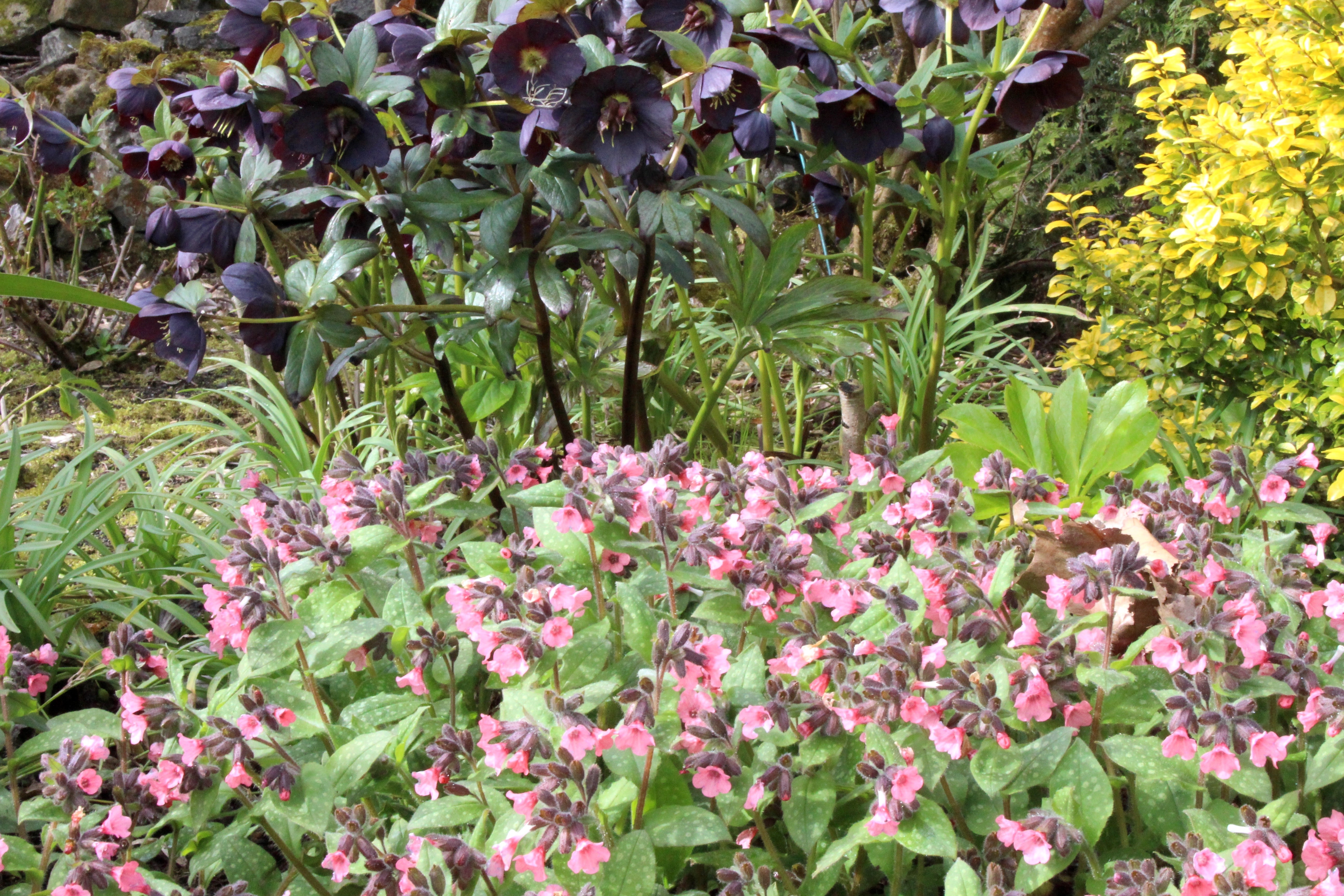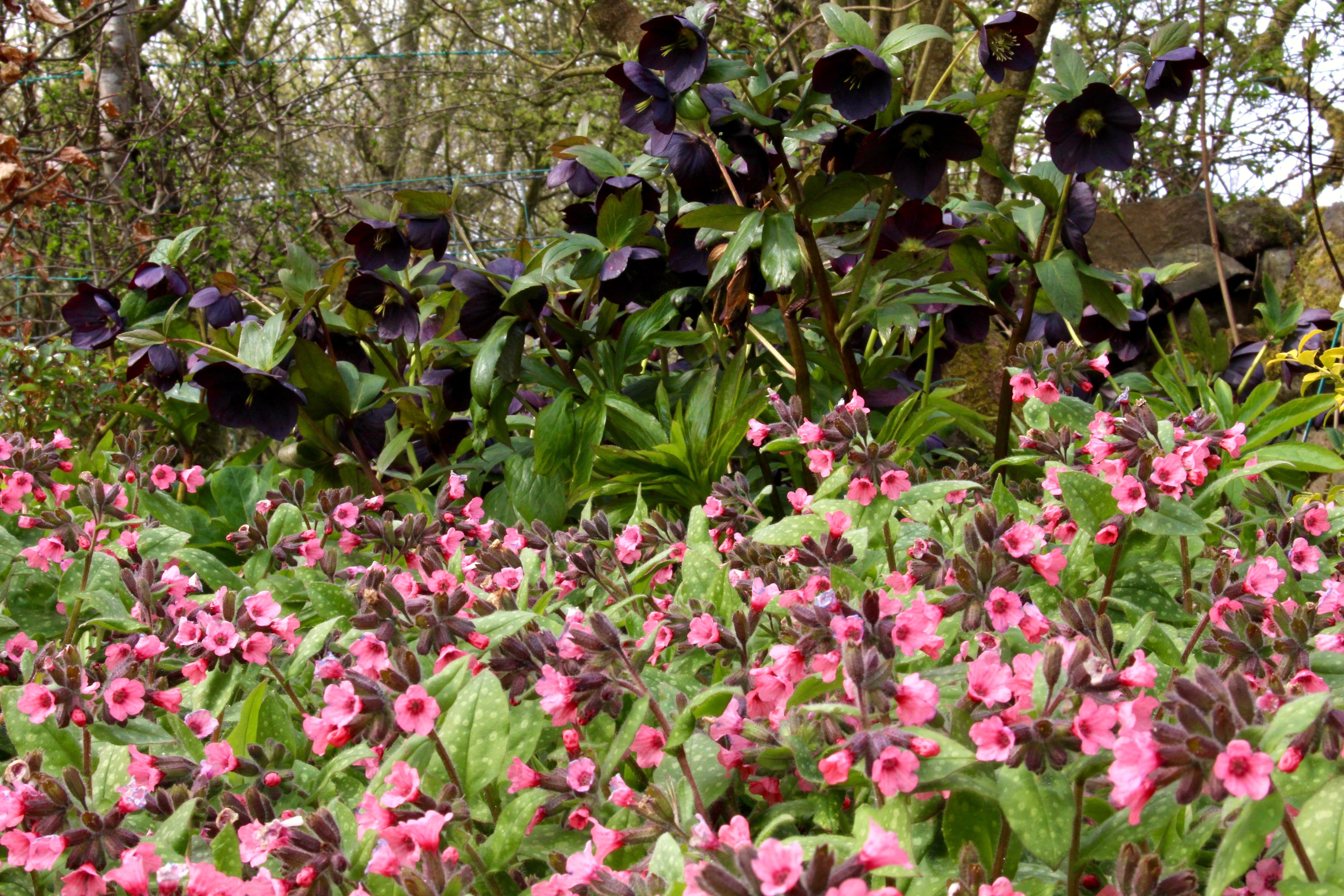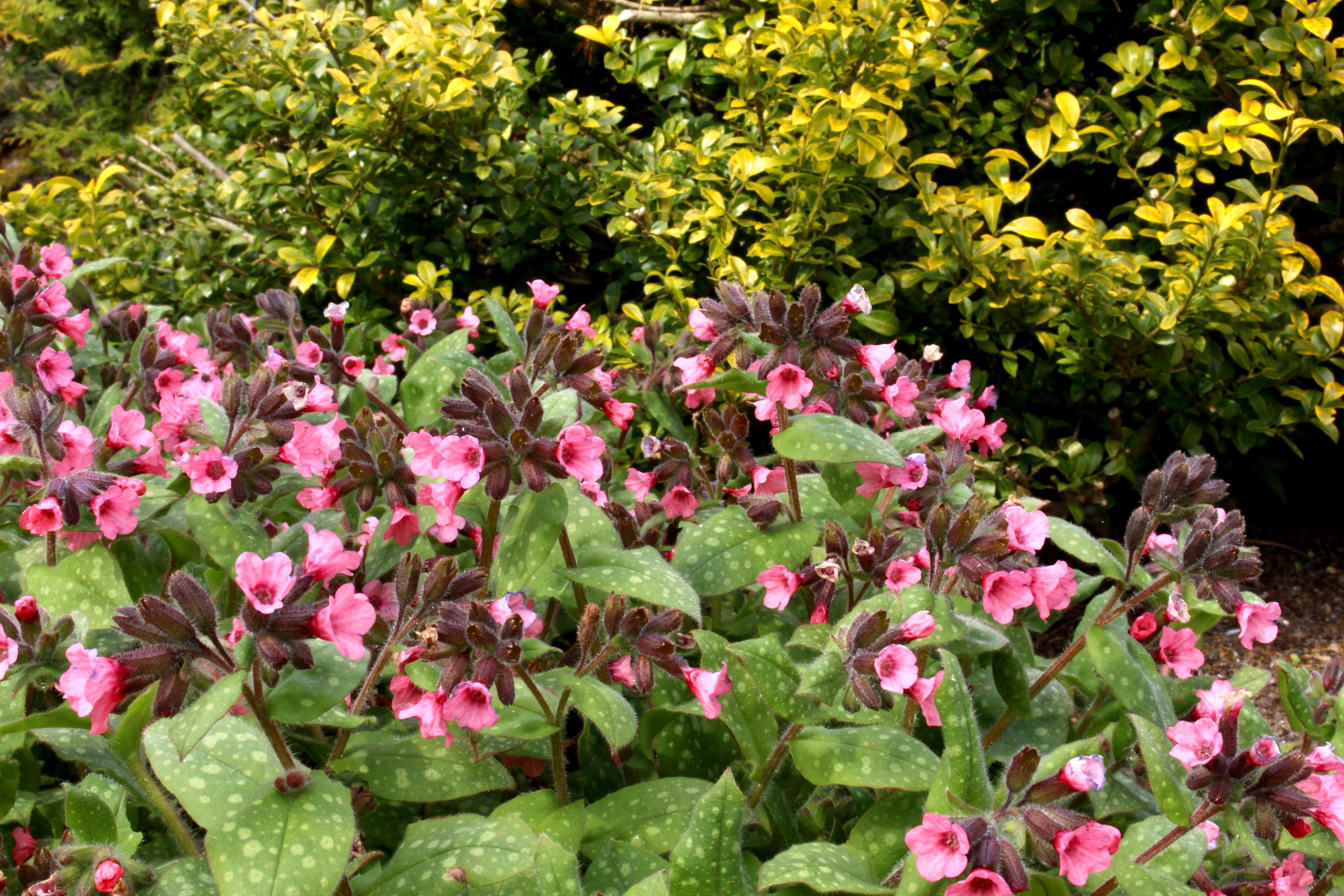Pulmonaria saccharata 'Dora Bielefeld'
Approx. 0.5 litre pot
About this cultivar:
Pulmonaria 'Dora Bielefeld' is a cultivar of German origin. It garnered a perfect score of four stars from the discerning judges of the Chicago Botanic Garden in their most recent trial. Praised for its magnificent floral showcase, resilient character, adaptability, and defiance against the harsh whims of weather and disease, this selection stands proud.
This enchanting specimen forms dense clumps that spread with determination, creating a verdant tapestry in its wake. Its fuzzy green leaves, adorned with pale silvery green spots, bestow an air of sophistication upon the landscape. One of the best cultivars it is normally evergreen in our climate. Indeed even in the grip of a Chicago winter's icy embrace, the foliage maintained its ornamental allure much longer than other cultivars..
Imagine, if you will, the emergence of delicate pink flowers, their ethereal forms taking shape from vibrant coral buds. Actually, you don't have to imagine - we have photos. Remarkably, these floral marvels defy the norm of their lungwort brethren, seldom transforming into hues of blue.
Indeed, Pulmonaria 'Dora Bielefeld' captivates with its distinctive qualities. Recognised for her resilience and allure, Dora serves as a delightful addition to any garden landscape, leaving admirers in awe of her beauty.
- Position: Full sun, Partial shade
- Soil: Almost any soil, grows well in Ballyrobert
- Flowers: February, March, April, May
- Other features: -
- Hardiness: H6 - Hardy in all of UK and northern Europe (-20 to -15°C), Fully hardy, grows well in Ballyrobert
- Habit: Clump forming
- Foliage: Semi Evergreen
- Height: 15 - 45 cm (0.5 - 1.5 ft)
- Spread: 15 - 45 cm (0.5 - 1.5 ft)
- Time to full growth: 2 to 5 years
- Plant type: Herbaceous Perennial
- Colour: Green, red
- Goes well with: Hosta, Heuchera, Hellebore, ferns, and Ophiopogon
About this genus:
Pulmonaria (pul-mona-ait-e-a) is a genus of flowering plants in the forget-me-not family (Boraginaceae), mostly native to Europe and western Asia. According to various estimates there may be between 10 and 18 species found in the wild, but the taxonomy of this genus can get very confusing.
The scientific name Pulmonaria is derived from Latin pulmo (lung). In the times of sympathetic magic, the spotted oval leaves of Pulmonaria officinalis were thought to symbolize diseased, ulcerated lungs, and so were used to treat pulmonary infections. The common name in many languages also refers to lungs, as in English lungwort. Other colloquial names include soldiers and sailors, spotted dog, Joseph and Mary, Jerusalem cowslip, and Bethlehem sage. (The pink and blue flower combination has earned our native Pulmonaria the common name of soldiers and sailors - because there are pink and blue flowers out together.)
Pulmonaria are evergreen or herbaceous perennials that form clumps or rosettes. It is a wonderful flowering plant that is well known as a shade lover, but in these islands you can usually grow them in full sun. They will grow in any soil that isn't extremely dry or waterlogged.
Pulmonaria cultivars rival Hellebores to be the first flowering perennials in the late winter and early spring. Ane of the earliest plants to bloom, you can be picking its urn shaped flowers in February when the rest of the garden still slumbers. The enchantingly speckled foliage of the Pulmonaria look great all winter and as a non-invasive groundcover.
Try pairing your Pulmonaria with other shade loving, low growing plants like Hosta, Heuchera, Hellebore, ferns, and Ophiopogon.

